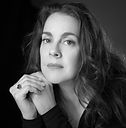top of page
Authors

Featured Author
is the author of several acclaimed works on Japan and Japanese culture. He was befriended by "God of Manga" Osamu Tezuka in the late 1970s and maintained a close relationship with him until his death in 1989. Fluent in spoken and written Japanese, Schodt frequently served as Tezuka's interpreter and is the translator of several of Tezuka's manga, including the 23-volume Astro Boy series. He won the Osamu Tezuka Culture Award in 2000 for helping to popularize manga overseas. In 2009, Fred was awarded the Order of the Rising Sun, Gold Rays with Rosette, by the Japanese Government for his work in helping to promote Japan's popular culture overseas. He lives in San Francisco.
bottom of page





































